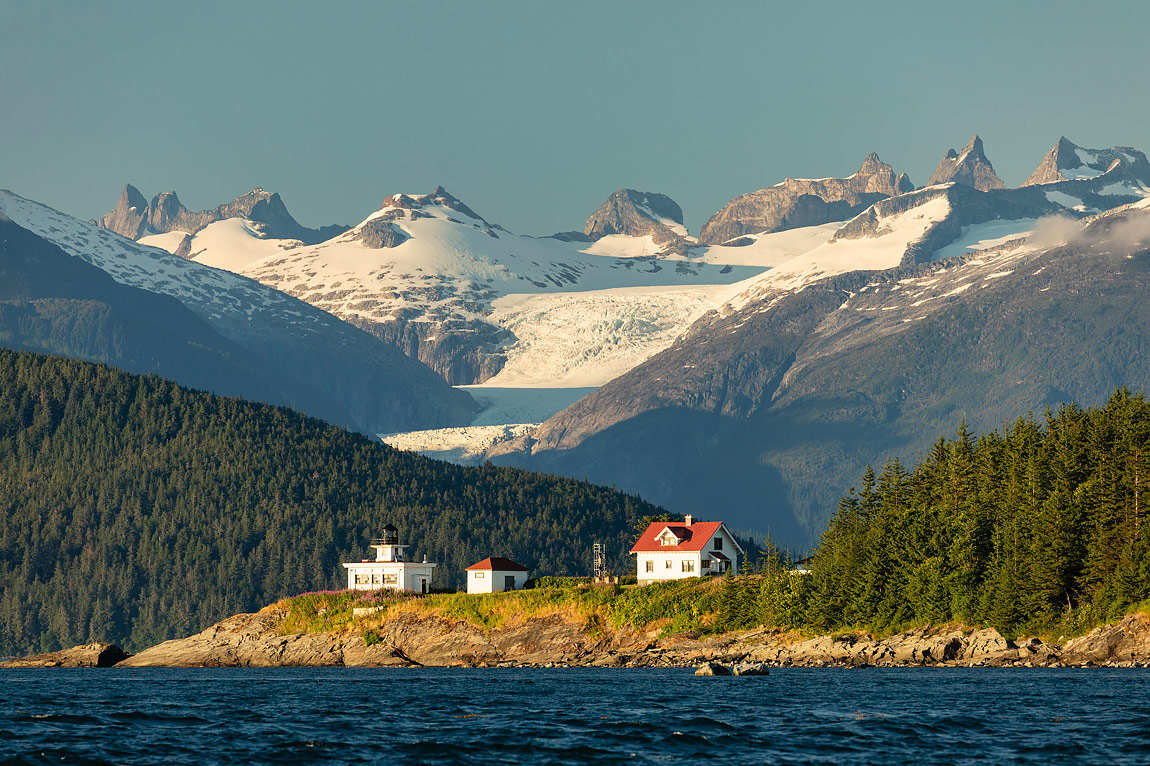On photographic trips, it is best to be prepared for the unexpected. Sometimes, when you go out with one subject and photograph in mind, you may find yourself returning with another equally satisfying image. This was the case when fellow photographers and I chartered a boat to photograph humpback whales in the Inside Passage of Alaska. In the summer, humpbacks return to Alaska from their winter birthing grounds in Hawaii to forage and raise their young. Our goals were to photograph calves, bubble-net feeding, and breaching.
On this particular day, we encountered more orcas than humpbacks. I was particularly excited about photographing an orca jumping out of the water as it pursued a porpoise in Lynn Canal. If the day had ended there, I would have been content with the outcome. I was shooting with Canon’s EF100-400 mm f/4.5-5.6 L lens, which gave me the flexibility to frame large marine mammals depending on their distance. Few would think of it as a “landscape” lens, but I would soon use it as such.
As we made the return trip back to Juneau, we passed by Point Retreat Lighthouse on the northern tip of Admiralty Island. It was around 8 p.m., and the low evening sun was lighting up the Coast Mountains with dramatic side lighting. The scene that quickly unfolded before us could not be passed up; I had the charter pilot turn around and position the boat so I could properly compose a photograph. I zoomed the lens to 300 mm, compressing the many layers of this landscape into the frame: deep blue waters of the Pacific Ocean, the lighthouse with Shelter Island behind, and Herbert Glacier (part of the Juneau Icefield) and the jagged mountains rising more than 6000 feet in the background.
This photo is one of the best-selling landscapes in my portfolio. When I display a metal print at craft fairs, it attracts a lot of attention. People often ask, “Where is that?” It may be cliché, but getting this image was a picture-postcard perfect—and surprising—ending to the day.


